Conventional wisdom says that when a new honeybee colony is established, the steward should not expect them to make enough honey to harvest in their first year. There are good reasons for this.
First, the bees need honeycomb to store and process nectar. The bees need to actually make this honeycomb before they can use it for nectar processing.
Second, the bees need honeycomb to incubate their young (“brood”). The bees need to actually make this honeycomb before they can use it for rearing their young.
Third, even if they had room for all of these activities, as soon as nectar is finished into honey, that honeycomb is sealed off and no longer available for producing more honey or more bees. So when that nucleus colony is installed into a new hive, the honeycomb they already have can’t possibly be used for growing the colony AND honey production. They need to lay and raise more workers who need to go out and collect resources then come home and build honeycomb before they can collect nectar to make honey and for sure they don’t want to commit honeycomb to honey storage until the whole operation is big enough to accommodate all the functions.
The new colony can be expected to make enough honeycomb to get going and make enough honey to last the winter, but generally speaking, it is not expected that a new colony, who did not start with a hive full of available honeycomb, will be able to build out and grow the colony fast enough to maximize production from the summer’s available nectar resources.
This was true for my hives Zero and One. However, hive Two was a wild over-achiever and had a population explosion early in the season, resulting in super-rapid build-out and thus they had all the honeycomb they needed to do all the things long before the other two. By September, Two had a honey weight of about 90#! Conventional wisdom varies regarding how much honey is needed for winter food – it depends on many factors, including thermal characteristics of the hive (insulated/not?), the environment (how cold was winter?), population (more bees need more food), and to some extent bee genetics as well. I took all of this into account, along with estimates of food needs in various climates, and arrived at the conclusion that 50# of honey is likely to be a safe amount to assure a winter food supply here. So 90# means I could harvest 40#. The frames on these hives hold about 12# each and my extraction centrifuge really wants to process three at a time for balance, so 4 frames is 48# (too much to take) and would be unbalanced (4 frames doesn’t divide nicely into the 3-frame extractor), so I went with 3 frames, or roughly 36# gross.
I think I was a little too eager and harvested the frames just a smidge early in the season. The bees were still quite active and did not take especially kindly to my extracting a few frames of their hard work. Had I waited another month, it would have been much cooler and the bees less able to respond to my intervention because of which. My protective suit did its job admirably (love that BJ Sherriff suit) but the hard part was separating the bees from the frames. They were quite keen to stay on them, even with smoke, even with the soft brush. Eventually, I got nearly all the bees off the frames, boxed them up, and took them away from the bee yard.
I still had to spend considerable time encouraging the bees away from the frames and away from me (they were quite keen to attack me — understandable, considering, even though I was gentle with the process), but at least they were away from home and therefore did not have the assistance of their sisters and would eventually realize that it was a lost cause. For the three frames, it took me maybe 10m to clear them. It doesn’t seem like much, but it was a fair bit of effort, especially holding the 12# frames up and waving the brush around and wrangling the smoker. It got done. No photos of this process because I was alone and quite busy with the doing.
Here’s a shot of the transport box and a clear view of one frame, full of capped honey.
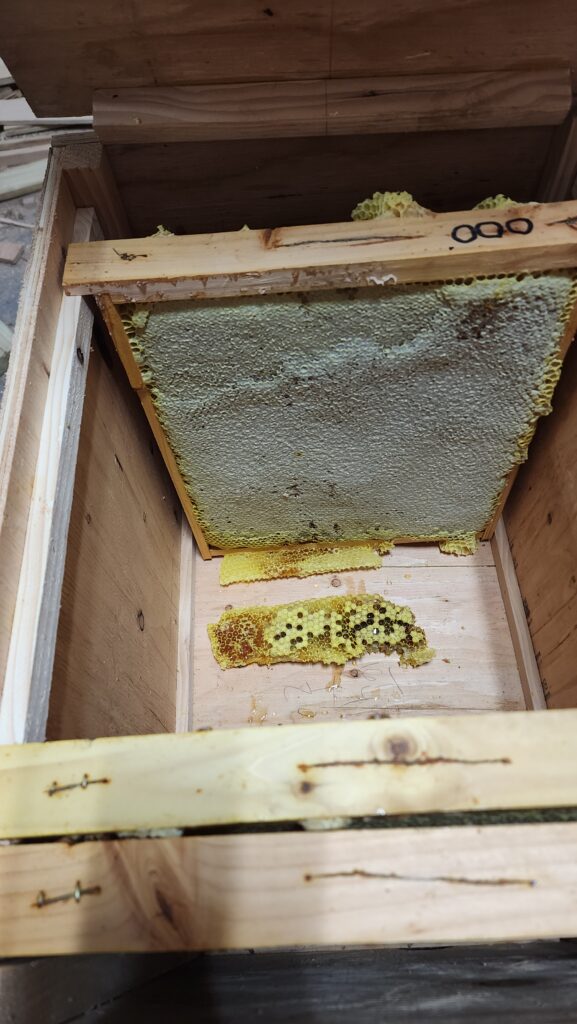
Because these hives had to be adapted to accommodate the differently-shaped frames on which the nucleus colony arrived, there is a gap below the frames which the bees were happy to fill with “wild comb”. Sadly, that comb cannot be harvested in the extractor and it cannot be returned to the bees afterward. If I had a press, I could press out the honey, but actually, most of this wild comb has other stuff in it (the white cappings are over honey; other colors are other things like pollen or larvae).
I put the wild comb outside where any passers-by could collect it. Bees will happily take honey and in-process nectar if they find it. So the least I could do was let them recover what I couldn’t use.
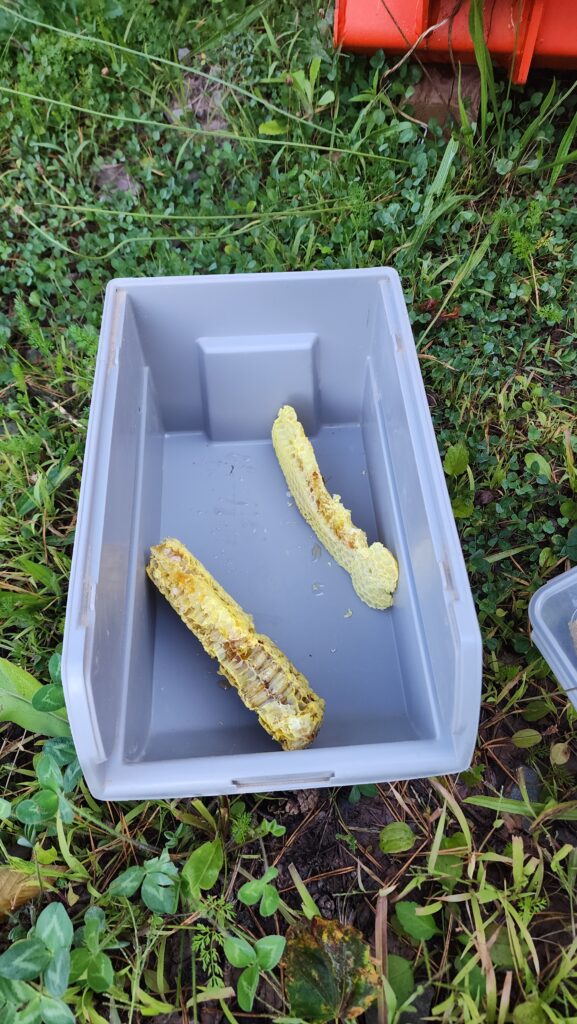
The next step was to put the frames and all the equipment (which had been thoroughly cleaned just before) in a small room — the tidy room off the back of the workshop is perfect for this — with a space heater. Honey doesn’t exactly flow quickly on its own. The heat helps with that. About 75-80F is the right temperature – the honeycomb is still decently strong to resist breaking up and the honey loses enough viscosity to flow decently. I left the frames and the equipment to heat-soak for a solid 12 hours.
Once everything was warmed through, it’s time to get this party started! Step 1 – remove the wax capping from the comb.
Look at all that beautiful honey…

Into the extractor it goes…
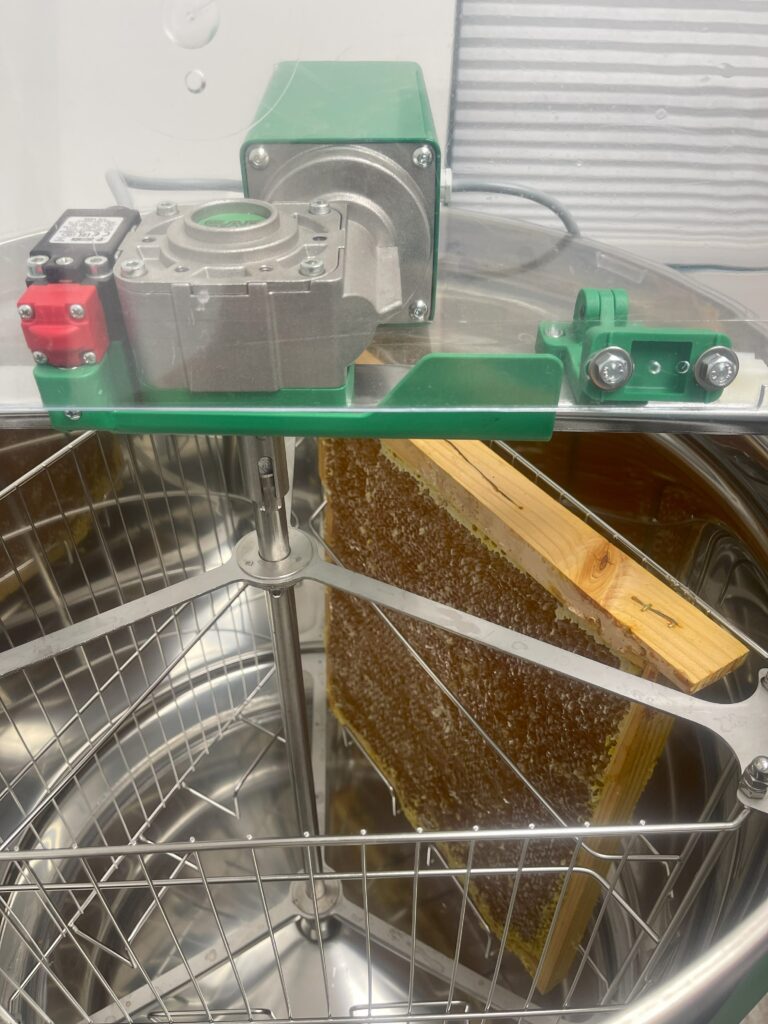
Continue with the other frames, then take them for a ride…
And voila!
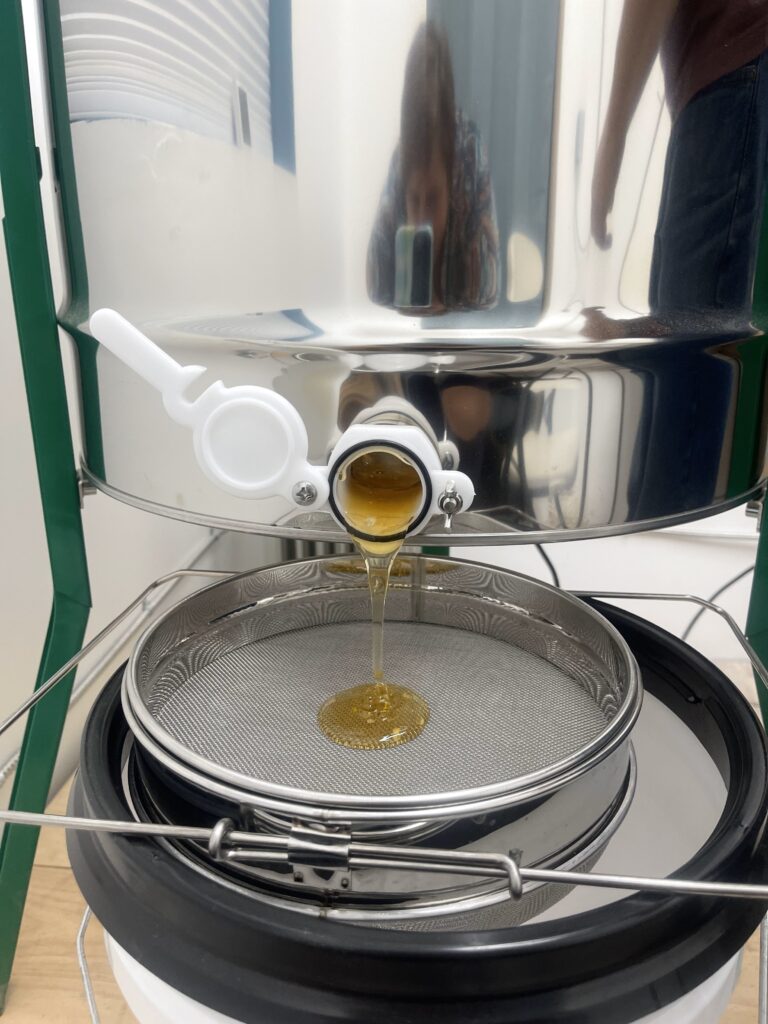
First delivery!
After a while, it got a little chunky, with bits of wax, propolis, the occasional dead bee/bee parts.
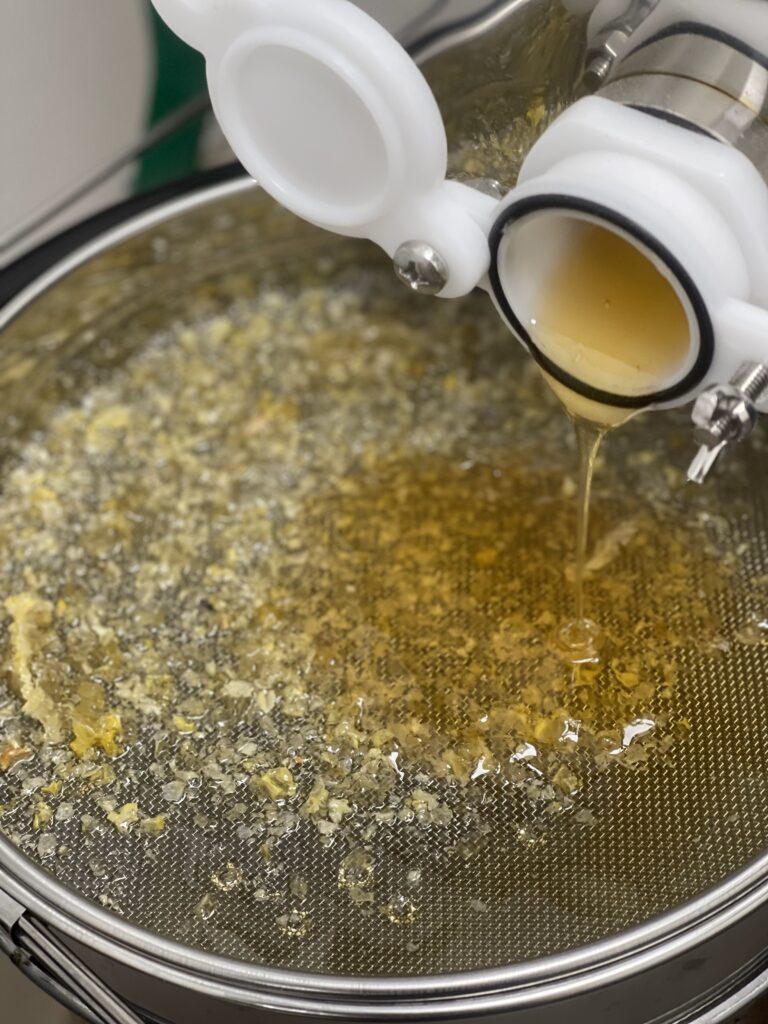
…hence the sieve.
I’m still learneing exactly how fast and how long to spin the frames. The faster you go, the more stress on the combs and the more likely a blowout, destroying the honeycomb that the bees worked so hard for and that I was planning to return to them so they could have it for next season. Too slow and some honey just doesn’t come out. I thought this frame was decently extracted, though later, when I returned the frames to the hives, the scales indicated a pound or two of honey actually remained in each frame to my surprise. Getting 10-11 per each certainly ain’t bad, and I’m quite keen to keep the comb intact for return to the bees.
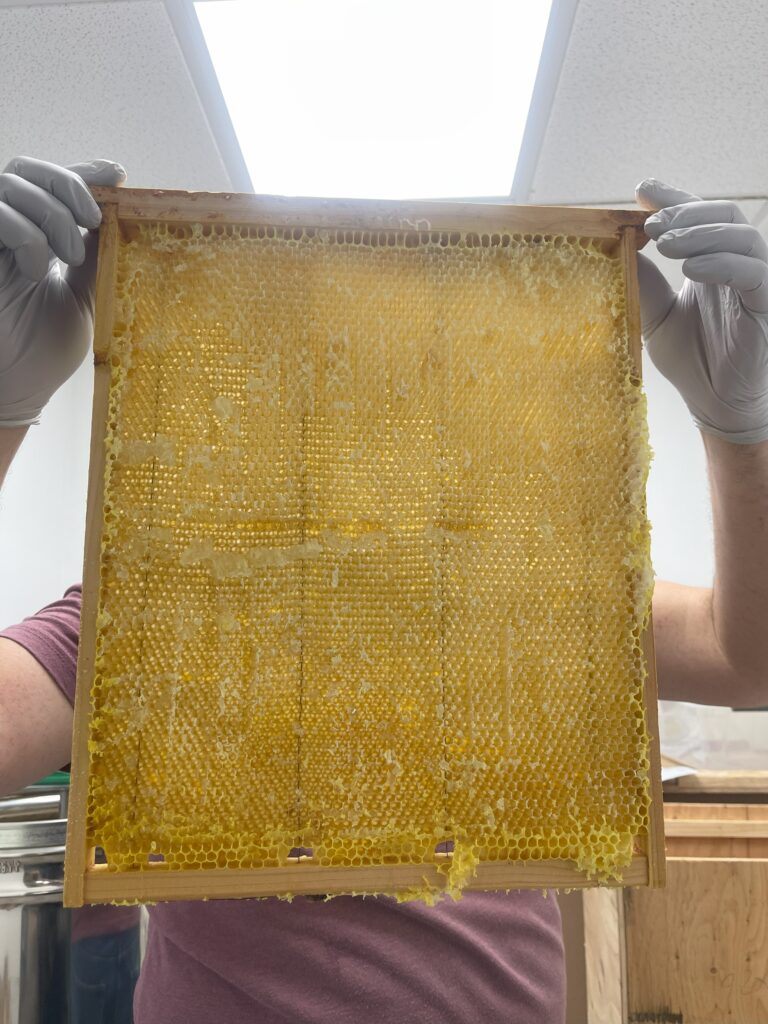
A bit of honey stuck to the wax cappings I removed, too. I didn’t have the equipment to recover that honey and it wasn’t enough wax to bother to boil down to separate and purify. I saved it, though, so after next year’s harvest (when I plan to also own a suitable press), I might do some beeswax processing.
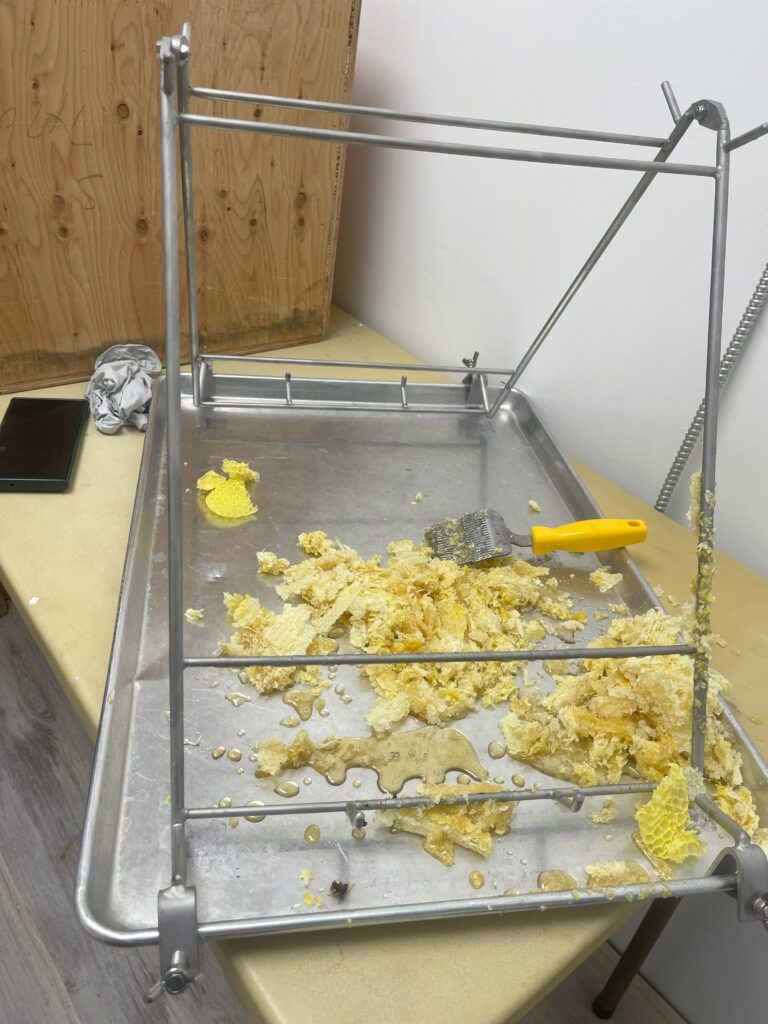
Once all the frames were spun out, it was time to encourage the honey on the inside of the extractor walls and in the bottom of the basin to come out. First, remove that sticky carriage so I can get in there…
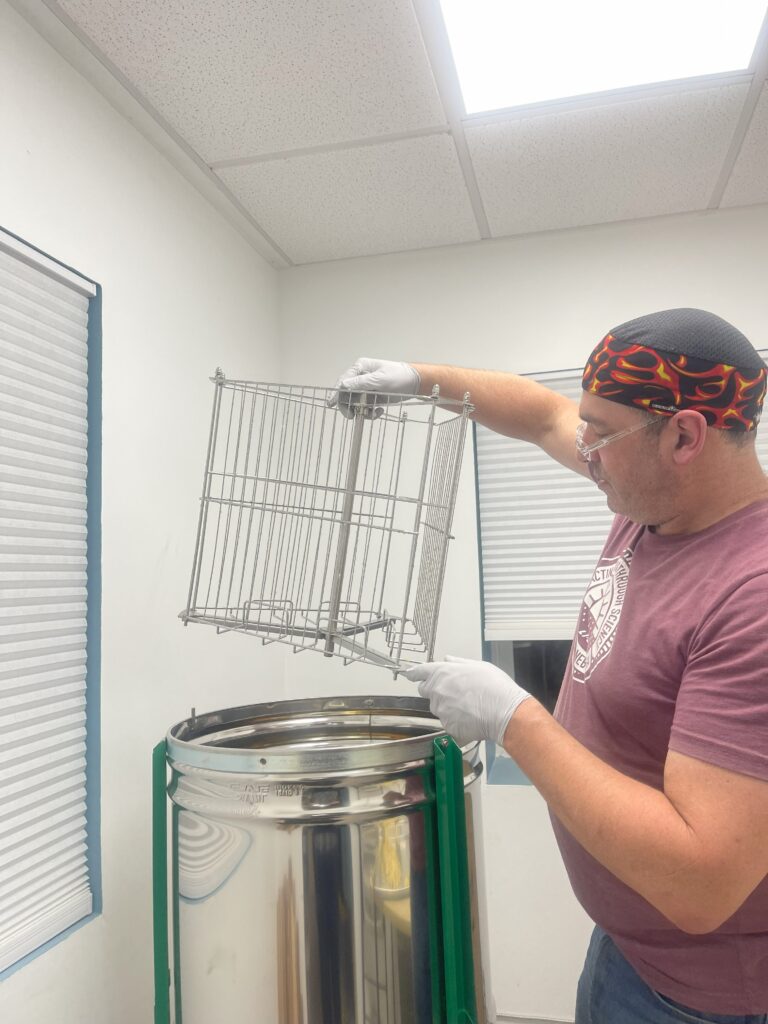
Then attack with my silicone bowl scraper.
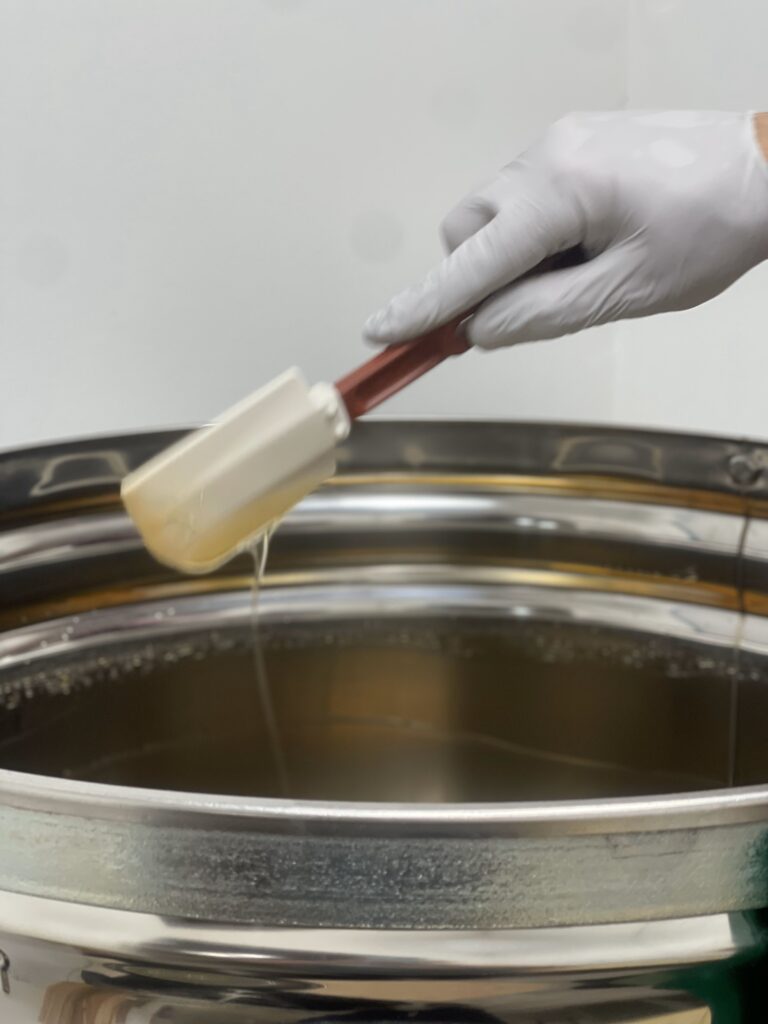
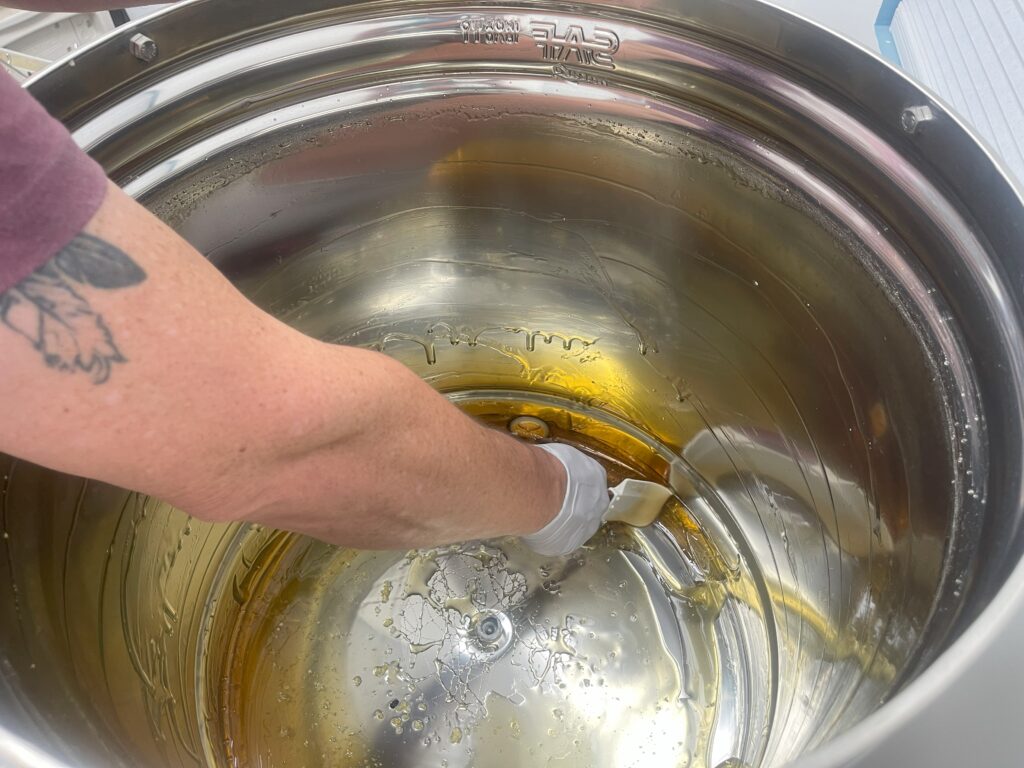
How much did I get? This much – just about half a 5 gallon bucket’s worth!
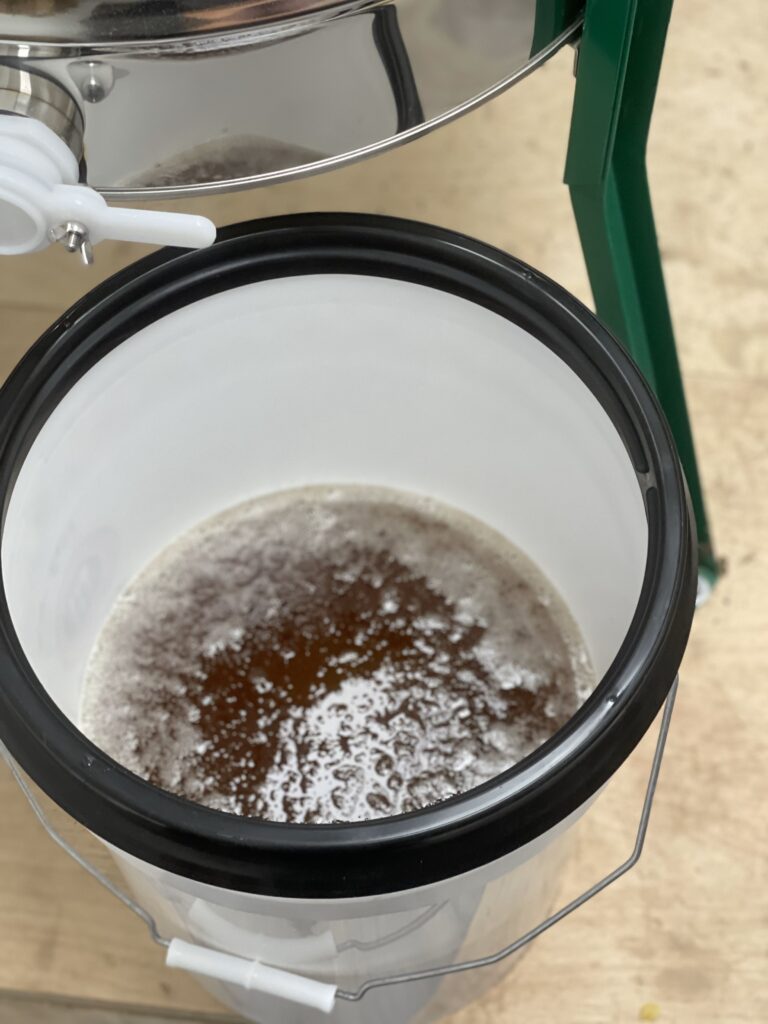
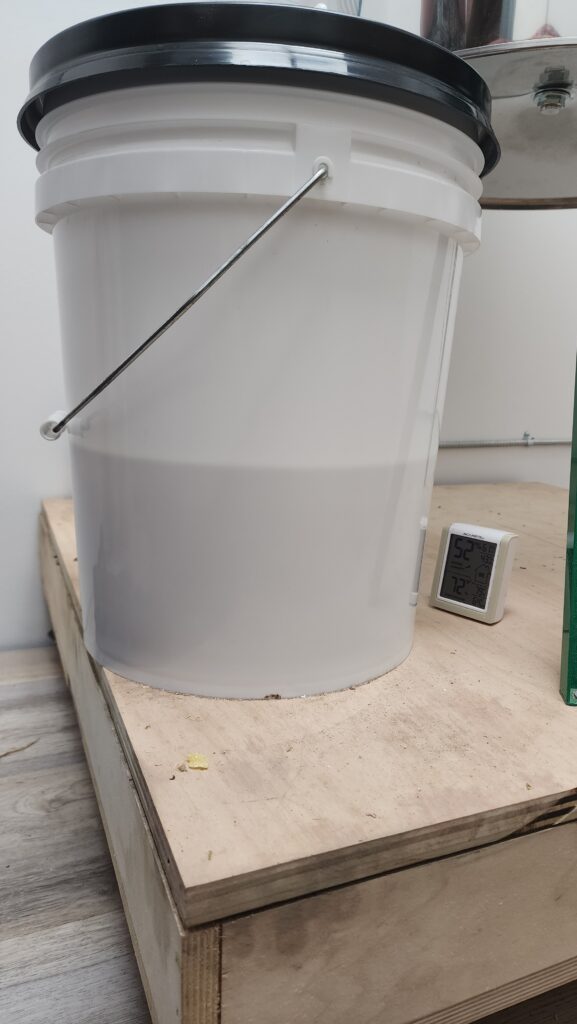
And how much is that? Well, start with 36# removed from the hive. Some honey was lost to the cappings and despite my best efforts, some was left in the machine and the sieve, perhaps 2# (net 34). According to the hive scale, I returned 2 pounds per frame = 6 pounds not harvested. Some of that was non-extracted honey, some was the frames and comb. 34 – 6 = 28. According to my bathroom scale… 28#
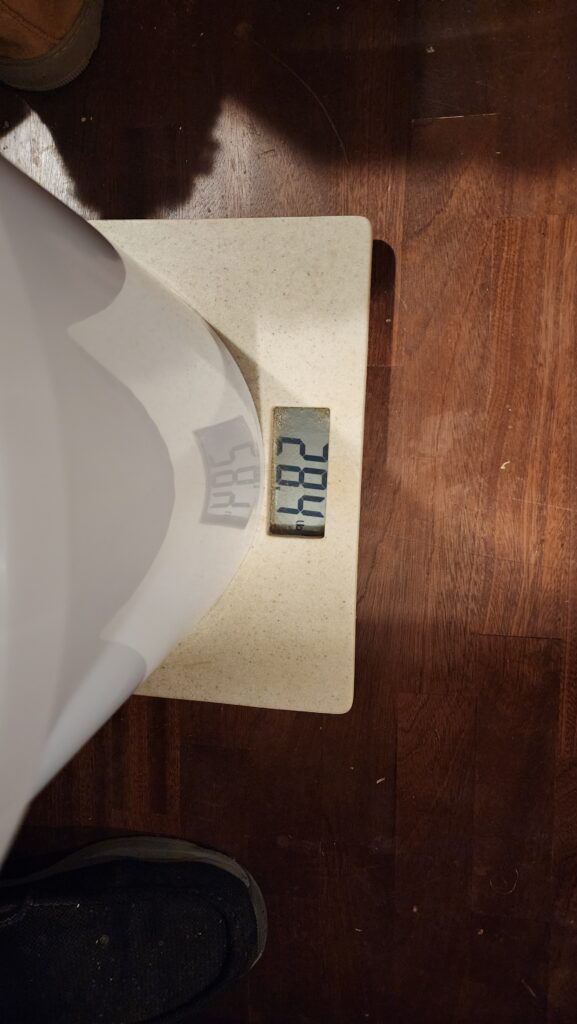
But that includes 2# of the bucket, so that’s really 26# net of honey, keeping in mind that both the hive scales and the bathroom scales are not precision calibrated, and especially the hive scales, which are exposed to temperature swings that affect their readings by a pound or two… so yeah, that 26 net is probably right.
Still, for “don’t expect honey your first year” to 26 pounds of harvest, I’m not complaining!
When I returned the frames to the hive, my over-achievers had already build so much new wild comb that I could only fit two of the three frames back in! I left the third frame out for recovery, which began promptly…
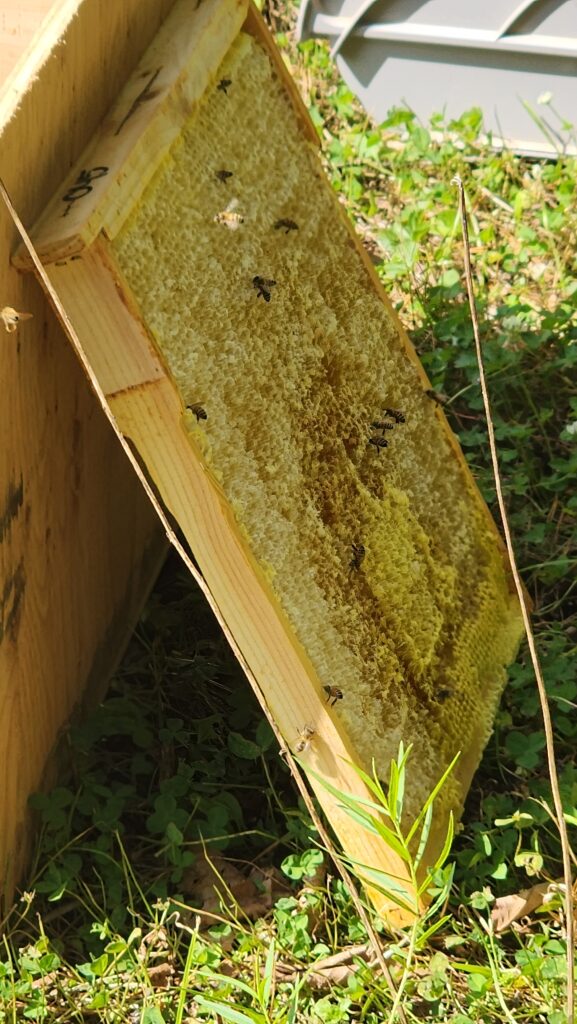
I’ll wait til early spring next year, when bee population is lowest and while it’s still cold, to go into the hive to remove the wild comb and return this frame if I can.
I’d like to be able to un-adapt the hives so there’s no room for wild comb, but that will require removing the converted nuc frames which will require changing their location in the hives such that they are not used for brood nursery and instead are used only for honey. That way, at harvest time next year, I will simply keep the converted nuc frames… but I fear this is wishful thinking. Best guess is they’ll build so much wild comb that it becomes quite difficult to remove the adaptation and restore the frames to their closer-to-bottom position. One thing at a time… first they have to make it through the winter. I’ll think about hive management later.
For now, I’m thinking about brewing my first batch of mead 🙂